Poverty is nothing new. Records of it go back thousands of years. However, we believe the global spread of the following poverty ideas can help transform the way we all understand it – and overcome it.
“No army can withstand the strength of an idea whose time has come” (Victor Hugo)
Here are our Top 7 :
This model encapsulates much of the thinking behind the other ideas on this page in a single, integrated model. It places the individual facing poverty at its centre, in the diagram below. For the individual, each coloured layer of the ‘cone’ shape corresponds to one of the 7 Humanitarian Basics that are common to them – and indeed to us all. From the bottom up, these are: Water, Food, Clothing, Shelter, Healthcare, Engagement and Freedom from oppression. Each ‘Basics’ layer can be examined separately and broken down further, into the 3 key factors within it that most interest us: Attributes, Access and Availability. The Attributes list the most vital components of that layer, which define why it constitutes a Humanitarian Basic. Those Attributes are then collectively assessed and scored, with respect to their Access and Availability, from the perspective of the individual.
Attributes, Access and Availability factors can each be scored either according to the Simple Assessment method, or the Detailed Assessment method. In both methods, zero means not available, not accessible, or not present. Scores from 1-3 in the Detailed method count as ‘Low‘ scores in the Simple method; 4-6 count as ‘Medium‘; and 7-9 count as ‘High‘. This allows users of the model to opt for either a ‘Simple’ (low/medium/high/none) grading, or ‘Detailed’ (0-9) assessment, based on specific circumstances and their own particular assessment priorities.
The individual facing poverty is recognised as living in the context of their Household and respective Community. These are consistent characteristics of human organisation worldwide, although not necessarily present everywhere. Their relative absence, or breakdown can be a significant causal factor for the individual in impoverished circumstances and their respective roles as 3 out of our 7 key ‘fixers’, are necessarily recognised within the model. The individual’s household and community are represented by the ‘ghost’ cone shapes surrounding the central layered cone, in the diagram above.
Notice how the bases of these ghost cones form concentric rings, as part of the ‘target’ section of the model, at the bottom of the diagram. Hence, the individual is conceptually “surrounded” by their household and their household exists within its relevant community. Working across those 3 cones and their corresponding concentric circles within the target underneath, there are 4 separate supporting sectors. These sectors represent the 4 other key poverty fixers (agencies, or ‘actors’) recognised by the model, collectively underpinning the community, the household and the individual – rather like a ‘safety net’.
These other 4 sector stakeholder groups are recognised within the model as: 1) In-Country Governments; 2) Non-Governmental Organisations (both national and international); 3) Multilateral Agencies (such as the UN and EU); and 4) Social Entrepreneurs. These stakeholder groups understand and perform their respective roles supporting the individual, household and community, with varying degrees of effectiveness and varying degrees of collaboration, around the world, on a case-by-case basis. Thus, the Model simultaneously shows 7 key dimensions of poverty for each individual, set amidst the context of 7 key fixers, who share a common interest in helping that individual overcome their poverty.
The outcome can be seen as a resulting ‘strength’ of the overall ‘net’, supporting the individual overcoming poverty, in cases where their own household and community do not. Where one stakeholder’s effectiveness in a given situation is assessed as low, or non-existent, the other stakeholders can variously extend their own roles to help compensate. Thus, an NGO, or Social Entrepreneur can sometimes perform the roles that a Government agency might usually carry out – and vice versa.
Hence, in a single model, we can achieve a ‘snapshot’ image of any individual worldwide facing poverty, alongside the relative effectiveness of the usual social structures we might expect to support them. When any individual worldwide faces poverty, it is experienced as a relative absence of the 7 Humanitarian Basics. When these are lacking for the individual, existing social structures around them typically function to intervene. Households and communities step in. Governments and NGO’s deploy resources. Multilateral agencies fund aid and development programmes; and Social Entrepreneurs introduce initiatives and innovations to help fill in any perceived gaps left by the other institutions.
This is how most people around the world have consistently escaped poverty throughout history: through the effective functioning of compensating social structures around them. In other words, other people. Where any individual remains in poverty unnecessarily, it is a symptom of the relative ineffectiveness or dysfunction of those various social structures in that specific case. The 7 Layer Poverty Model is intended to give a simple, yet powerful common concept, vocabulary and associated assessment mechanism regarding poverty. In so doing, it is intended to multiply the effectiveness of existing approaches to solving poverty – both locally and globally, from the micro through to the macro levels.
Here, we are stealing an idea from IT management. Yes, seriously. IT management is quite a complex problem itself. Yet there are already widely-accepted global models and standards in place to help manage IT (eg ITIL Version 3). In IT management circles, it is accepted that: “You cannot properly manage what you do not measure and you cannot properly measure what you do not define”.
We apply that same clear logic to the problem of poverty. It begins with a new Poverty Definition. We have deliberately chosen a definition that is simple enough for a child to explain and understand, while being powerful and flexible enough for us to use for measurement globally. Hence, our technical definition of poverty, that we subsequently use for assessments, is:
“The relative absence of 7 Humanitarian Basics”
Taking the above poverty idea, we now have a definition that we can use to begin to measure poverty: consistently, relatively and absolutely. We achieve this by means of Simple, or Detailed Assessments, as appropriate for the given Study. Once we have that measurement, we can plot it relevant to any co-ordinate on the face of the earth.
And tools like Google Earth and Google Maps allow us to match that GPS positioning data to images of the location. We can map where any given poverty data relates to. Even modern ‘Smartphones’ often have GPS systems built into them, so it becomes easier to obtain the tools that help tie the data to a location. And estimates suggest that in 2014, there will be 1.75 billion smartphones in the world. Plenty to go round.
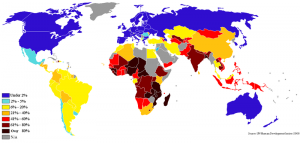
Now that we see poverty as relative absence of 7 factors (water, food, clothing, shelter, healthcare, engagement and freedom from oppression), we can begin to define the essential elements within those 7 factors. This is perhaps helpfully illustrated by an example of what is NOT essential, in the case of water. Water has many attributes which we might choose to measure, for different reasons. One of them is weight. However, in the context of poverty, the varying weight of water around the world is not considered to be materially important. By contrast, the World Health Organisation has produced large quantities of detailed material on what IS considered important, regarding human consumption of water. You can look it all up in the ‘Resources’ section of this site. (Warning: it’s quite a lot to read).
In any given study, users of the 7 Layer Poverty Model may choose to examine certain attributes of given water supplies in some detail. This might be for a specific medical study and comparison, for example. However, we anticipate that there will be greater use of the model, where the criteria being measured are basic assessments of levels of pollution, infection, taste, odour and clarity. Where scientific measurement instruments are NOT being used, such assessments will necessarily be made with the help of locals best-placed to comment. Such assessments are recognised as necessarily subjective to a degree, but still constitute “best available data”. (Yes, we know that acronym spells ‘BAD’).
This approach is pragmatic and takes advantage of a modern trend towards “crowd-sourcing” of data. It is adopted here, because it enables some sensible, cost-effective, timely measurement, within known limitations, using local expertise – rather than working with no data at all and no comparative model. Those well-resourced studies, with access to the necessary instrumentation and experts to use them, can still apply the concept of thresholds to more precise data, to provide a net attribute score.
Both approaches can still use the Model scoring framework. Those wishing to compare one Model study of one area with another study of a different area, should inform themselves regarding the different methods used to gather the source data, in each case. In other words, they should satisfy themselves to what extent they are reasonably “comparing apples with apples” between studies.
On the matter of crowd-sourcing measurements, the method’s effectiveness has been independently assessed and those interested can review the published academic literature on the subject. We witnessed one televised experiment, where non-experts and experts alike were asked to estimate the weight of a large bull at a farmers market in the UK. The non-expert estimates ranged widely, with the highest estimate being around 8 times the lowest estimate. Some might be understandably concerned about such ‘wild’ variations in the source data. The expert views were bunched far more closely together, as you might expect. What may surprise you is that, when taken together, the AVERAGES of the 2 separate groups were still within only 10% of each other.
This phenomenon reflects the ability of non-expert groups to apply varying degrees of skill, to collectively arrive at answers that are ‘close enough’ for practical application. In a similar way, the widely adopted ‘jury‘ system is used internationally to help arrive at justice in courts of law, by generating a majority opinion between a relatively small number of individuals, presented with the evidence. Hence, for measurement within the 7 Layer Poverty Model, we recognise the compromise we are making, in the trade-off between scientific ‘measurement’ and ‘best assessment’. We opt for best-available, crowd-sourced, quantitative data, rather than purely anecdotal, potentially emotive, qualitative data – or even no data at all.
This approach gives us a starting point for assessment and comparison. Regarding poverty, we want to obtain best-available data to inform us. We want practical, quantitative tools that help us answer such relevant simple questions as: Where are we? Where do we want to get to? How are we going to get there? By when? With what resources? And how will we all measure progress?
The individual facing poverty remains at the heart of the 7 Layer Poverty Model. They are typically the most motivated of the 7 key ‘fixers’, regarding their specific experience of poverty – as they are the ones feeling the pain of it daily. However, there may remain aspects of the poverty they face, which are beyond their immediate ability to overcome.
That is where the other fixers come in, where typical social structures are functioning effectively. The first of these to consider is the individual’s own ‘household’, recognising that this label reflects any mutual sense and recognition of ‘belonging’. Clearly, an individual child facing poverty will naturally turn first to their biological parents (or other primary care-givers), all other things being equal.
Orphans, or abandoned children, however, may naturally turn to grandparents, aunts and uncles, or older siblings for support, yet still operate within the same idea of a ‘household’. Similar extended circles of support may exist for adults who are themselves facing poverty, through approaching their respective social networks of contacts and friends. Some organisations provide institutional alternatives to such traditional ‘household’ support models, in the form of official facilities, such as orphanages, poor houses and homeless shelters. Refugee camps are an extreme instance of a spectrum of possible institutional response models.
Aside from remote and isolated households, the vast majority of mankind chooses to organise itself into communities, which are the next level of fixer that those facing poverty may turn to. In many cases, this turning to the wider community for help may ultimately take the form of occasional, or habitual begging. This particular manifestation of community dependence may be witnessed more frequently in urban areas, where the individual’s personal networks and relational ties within the relevant community are not as strong.
It is assumed by default, in the absence of evidence to the contrary, that begging is NOT the course of action chosen by the beggar out of preference. If they felt they had another, better way to engage within their chosen community, they would be living THAT way instead. Government bodies, NGO’s and social entrepreneurs would typically seek to support that individual, in finding a preferred alternative way of engaging productively within their community, where practicable.
Such efforts are usually made on the basis of limited resources, limited frames of reference (eg scope of charity mandate), and/or limited powers to act. Social entrepreneurs will tend to have more latitude to act as they see fit within the law, but still face the challenge of finite resources.
Hence, on a case-by-case basis, the range of players in the specific poverty scenario will have comparative strengths and weaknesses in providing solutions, and quite possibly even shifting primary roles. There is also the challenge that each different organisation has their own separate budgets, management structures, procedures, priorities, agendas, information and cultures. Not to mention separate staff and possibly different languages.
None of them can read each other’s minds and hence communication between them all is required. In the absence of common systems and a common model, such communication often proves…problematic. There are various publicly available studies and materials on just how problematic things can get, in the case of complex humanitarian disasters, like the Haiti earthquake in 2010.
While all agencies, stakeholders, or ‘actors’ may recognise the existence of the others, they may not all share a common understanding of how their respective roles play out and apply in each case of an individual facing poverty. This leads to varying degrees of effective coordination and at worse, chaos. Immediately following the Haiti earthquake, some 10,000 separate NGOs appeared on the ground, each with their separate ways of doing things. Co-ordinating 10,000 newly-arrived volunteers would be challenging enough. Co-ordinating that many organisations was more challenging still.
This is where the 7 Layer Model will help. It builds on common understanding of what poverty IS, while not prescribing the specific ways to best overcome it in any given situation, or individual set of circumstances. It translates well across ANY language, by using basic, human experience-based ideas, not charity jargon, nor government-speak. It helps define the “who, what, when and where”. The “how and why” are then effectively addressed with Systems Thinking, which is explained in the section immediately below. The local stakeholders are best placed to make the “how” decisions between themselves, based on Systems Thinking insights. It helps if there is common agreement and understanding of what each agency’s strengths and limitations are, relative to making progress against the Poverty measurement criteria being used.
Where relevant Government bodies are not empowered, funded, or otherwise equipped to act on behalf of an individual within its territory, it must necessarily turn to other agencies, who share their common interest in overcoming individual poverty. A particular and extreme example of this can occur in the case of refugees fleeing from one territory to another (eg Syria, where in 2014 some 2 million people remain displaced war refugees). Equally, those acting on behalf of other agencies (and those donors who fund them), will reasonably ask why the relevant Government itself is not already acting, if the reasons are not clear and self-evident, such as is the case in refugee and other humanitarian disaster scenarios. In contrast to Governments serving their own citizens, NGO’s and social entrepreneurs have no LEGAL duty to act.
Partners for Change (www.partners4change.org) have produced some useful training material in this area, highlighting the importance of mapping and modelling all the key players in a given aid, or development scenario. It is published as one of the tools on their website, as the “Deliberate Leadership and Learning Roadmap”. It is clear that effective coordination between ‘partners for change’, or a ‘coalition of the willing’, is necessary to achieve best results.
This is where the 7 Layer Poverty Model and Systems Thinking will help – in focusing the fixers. It gives them effective tools to better analyse complex real-life situations, then co-ordinate and measure progress against agreed, common plans and goals. By avoiding wasted efforts, more progress can then be made in overcoming more poverty sooner, with the same or less resources.
The 7 Layer Poverty Model sits at the heart of our approach to overcoming more poverty sooner – rather like the hub of a wheel. It effectively unlocks insight into the ‘who, what, when and where’ of individual poverty, as illustrated above. Understanding the complexities of the ‘why and how’ of poverty requires a different tool – that of Systems Thinking. It is evident from prevailing published literature on the subject, that well-meaning experts often disagree as to the primary causes and hence best solutions to global poverty. We believe that this is typically because different experts are focusing on different parts of the total picture.
Systems Thinking provides an integrated, intellectual framework for understanding poverty from the macro to the micro level. It reveals why different experts can be such staunch advocates of apparently conflicting opinions and offers an integrated approach that can harness them all. It sees the world as ‘a system of systems among systems’ and provides insights regarding how they are all inter-related, through causality, inputs and outputs. This is rather like the ‘system of systems’ that makes up your own body.
Systems Thinking shows that any man-made system (social or economic), can be conveniently broken down into people, process and technology factors, for further analysis and understanding. By doing so, problems and dysfunctions within the systems can be better diagnosed. Hence, from a Systems Thinking perspective, poverty is seen as a state of an element within a given system, resulting from dysfunction in other parts of the overall ‘system of systems’. By way of illustration, think of sickness as a state which is evidence of dysfunction in an otherwise healthily functioning human body.
With any instance of poverty, some may see the ‘fault’ as lying within the global socio-economic ‘system’ itself, while others may point to ‘faults’ within individual system ‘components’. Our view is that each poverty instance must be individually assessed on its own merits – and Systems Thinking provides just the right tools for such an effective case-by-case analysis. To discover more about the unique insights into poverty provided by Systems Thinking, read our more detailed Introduction to the subject here.
There is a more general, cultural acceptance among more developed nations, that a significant part of a person’s early life can be usefully spent investing in their future. This typically takes the form of more frequent education to university level and/or vocational training. It is not uncommon for a young person in a developed nation, to only engage in full time, paid employment, in their early twenties. By this time, many tens of thousands of dollars may have been spent educating them. The assumption is that all this long-term investment will eventually pay off – and that the person’s own household can AFFORD the luxury of waiting until it does.
There are many compound reasons why the same is NOT culturally true of less developed nations. The pressing need for income to live on TODAY, may drive the need to have young children begging, or collecting garbage for money, rather than attending school. The total cost of schooling any given child (uniform, books, fees, travel) may also be prohibitively high. On top of that, the average number of children per family is often higher in certain areas of less developed nations, meaning the total cost per household for such schooling is much greater. In the vast majority of cases, the relative cost of a university education would therefore be unthinkable.
In China, parents may have to consider saving for up to 40 years to fund a child’s education – and that is in a country with a previously-enforced ‘one-child policy’. There is also the very real prospect that life expectancy in less-developed nations may well be lower and such a long term, investment view for most children is unrealistic.
This set of compound factors further reinforces the well-known illiteracy-poverty cycle. Breaking out of that requires those with enough cash to invest in an education timeframe of 10 years or more. That is much longer than most organisations’ budget horizons, except for the in-country Government. However, the Governments of less developed nations do not typically have the tax revenues to spare to invest so heavily in such long-term people-development programmes, which show NO immediate productivity benefits. Do you see how this reinforcing cycle repeats itself?
In the absence of some better plan, Governments are being forced to choose between educating children and feeding them. An impossible choice. There continues to be a place for a range of one-time and short-term, high impact, aid and development initiatives. However, in our view, the stakeholders BEST-PLACED to make those kinds of long-term investment decisions, are the wealthier individuals in more developed nations, who are already making those kinds of decisions on behalf of their OWN children and grandchildren. They do not need to be convinced on the benefits of a good quality education. That argument is already won. They know it.
Once such an investment has been made in empowering a given individual, lifting them out of poverty forever, we believe that THIS person will then be personally and powerfully motivated to do the same thing for others just like them. Thus, they switch sides on the poverty scales – and they can begin to break the poverty-illiteracy cycle for others too. Thus the positive chain can continue. The original donor can then find another person to invest in and the person freed from poverty, can begin doing the same thing – each within their own means.
The need then is to engage such convinced people, to consider the same long term investment decision – but on behalf of a child who is not their own, who was simply born into a family that cannot afford it. We believe that those people DO exist. Millions of people around the world already sponsor a child, or a family in which children are being educated in this way. And CONGRATULATIONS to them. We plan to help engage a lot more people in this way. We believe we can find a billion of them in all. That is how we intend to “help a billion people help a billion people”.
Most people will have thought, at some stage, about doing something to “help the poor and change the world”. Then the massive weight of all of that need becomes apparent and the task seems overwhelming. Which charity? Which priority? How much? It is a common human behaviour, when faced with such bewildering choices, to react by a form of ‘fire-fighting’. That is, they tend not to have a well-thought out plan, but react to whoever shouts loudest. In charity terms, this can translate into giving reactively in response to the latest publicised crisis.
Charity professionals know this and many act accordingly. Hence, they have learned to shout louder, more frequently and often with an increasing sense of emotional alarm. We experience this as more begging mail, e-appeals, phone calls and media advertising. All of this costs money. It is referred to within charities as ‘the cost of donor acquisition and retention’. It is a competitive world out there for the ‘donor dollar’. And an unintended consequence appears to be the phenomenon known as ‘compassion fatigue’, where donors begin to respond less readily to such forms of appeal.
Don’t believe me? Statistics from 2011 measured which pay-per-click search terms from Google commanded the HIGHEST rates. Unsurprisingly, the top ten was dominated by financial and legal terms like loan, mortgage, insurance, claim and attorney. What may surprise you was that “donate” made it to number 7 in that list, weighing in at up to US$42 per click. That means that if you entered that search term on Google and then clicked on the link to that charity, the charity would end up paying Google up to $42 each time. If you become a donor, that means you are effectively paying them to take money from you. If you clicked and then didn’t donate, it’s even worse financially for the charity, or cause.
The difficult reality is that a lot of charities have to use up a lot of their donations, just to pay to keep going – to keep asking you for money, year after year, just in case you stop. It’s a sad system. That is why Give A Billion is uniquely funded. We don’t need any of your money. We are completely self-funded. We DO want you to donate – but wisely, freely, willingly and efficiently. And not to us.
Instead, we want to help you find organisations that are well set up to run effective child (or individual) sponsorship programmes, where 90% or more of the money goes to the family of the child (or local institution), in such a way that the child is educated, without the rest of the family being left to struggle as normal. We would rather the child gains your sponsorship, than not at all, but we believe the most constructive domestic environment for the sponsored child is one where the whole household benefits. We are not best-placed to assess the details of the local situation and we suspect, nor are you. What we all need is proven, reliable organisations, with local assessors, who can help ensure that the investment in the child is happening correctly and the funds are being properly used.
To set up and maintain that kind of effective support and supervision all costs money – but it doesn’t need to cost a lot. You should pick from among organisations who you believe you can trust and who have the right kind of programmes supporting the right kind of person for you. We would encourage a one-to-one commitment, as these stand the best chance of surviving over the long term. It is the best way of balancing the scales back in favour of those individuals born into poverty, who would like to change their circumstances and are willing to put in the effort to make it happen.
Some may argue that such investment in an education may be better spent on girls, who may otherwise be more prone to neglect and yet are also more likely to remain in the local communities, where they are needed to help anchor the local population. Boys, by contrast, may leave their communities and head for the big cities and the well-paid jobs. Our view is that it must ultimately be YOUR choice.
The global trend of population towards urban areas will continue. That is where most of the jobs for better-educated people are. It is forecast that by the end of this century, around three quarters of the entire global population will live in urban areas. That will mean a lot of poor children will be living there as well – and they will need educating too, just like the rural children. So in our view, male or female, it should be your informed choice. Whoever you feel the greatest degree of empathy with and sense of long-term commitment to.
We wish you all the very best in choosing the right life to help transform. We will do our bit to encourage sponsorship-oriented charities to be efficient and effective in their programmes, while still giving you the vital information you need about the child and family’s progress. Encourage such charities to apply the 7 Layer Poverty Model, if they are not already doing so. This will help them to help you – and more importantly the ones benefiting from your support.
We thank you for digesting these 7 powerful poverty ideas. They are the best we have for now, but we are always looking to improve them, or take on better ones, if you have them.
And we thank you once again, for being…
One in a Billion!


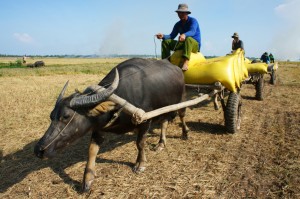





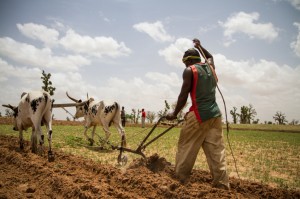

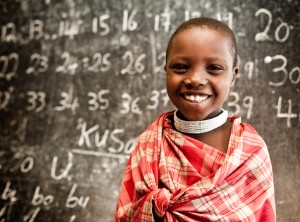

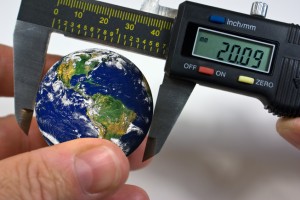

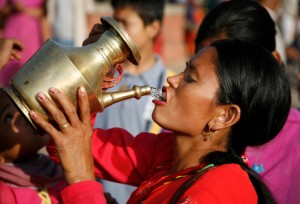


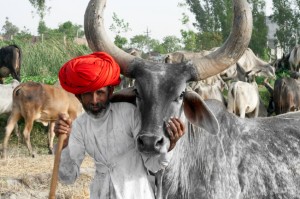

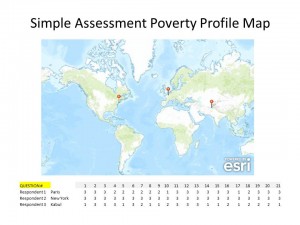
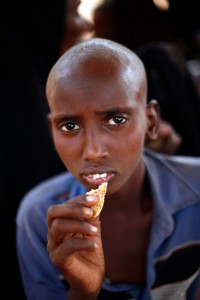

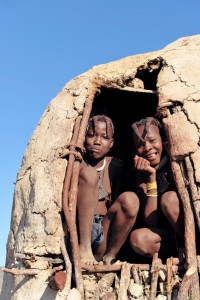




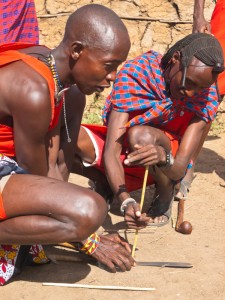


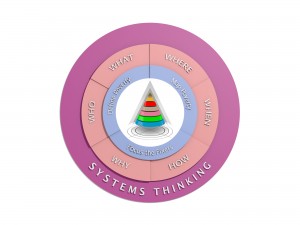
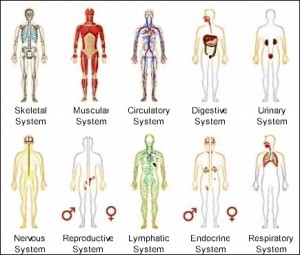







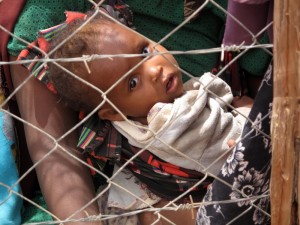
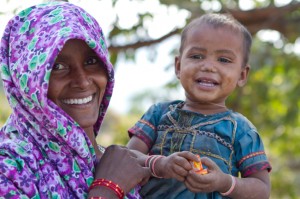


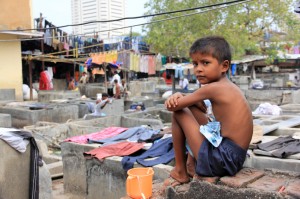

this is a good write up.